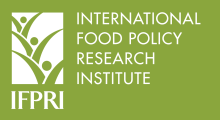Resource information
The International Food Policy Research Institute (IFPRI) business-asusual projections of agricultural supply and demand anticipate a rise in food prices of most cereals and meats, reversing long-established downward trends. Between 2005 and 2050, food prices for maize, rice, and wheat are projected to increase by 104, 79, and 88 percent, respectively, while those for beef, pork, and poultry will rise by 32, 70, and 77 percent, respectively. Moreover, the number of people at risk of hunger in the developing world will grow from 881 million in 2005 to more than a billion people by 2050 (IFPRI International Model for Policy Analysis of Agricultural Commodities and Trade [IMPACT] baseline, Model for Interdisciplinary Research on Climate [MIROC] A1B scenario1 used in this book). More recent modeling efforts that use nine agricultural models, including both general equilibrium and partial equilibrium models, project that food price increases out to 2050 will be more moderate under climate change, with the IMPACT results in the medium range of price increases. Our results indicate increases in the real price of maize of 40–45 percent in 2050 and in the price of wheat and rice of 20–25 percent under climate change relative to a no–climate change scenario, using the Intergovernmental Panel on Climate Change (IPCC) Fifth Assessment with Representative Concentration Pathway (RCP) 8.5 and Shared Socioeconomic Pathway (SSP) 2 scenario2 (Nelson et al. 2013).


